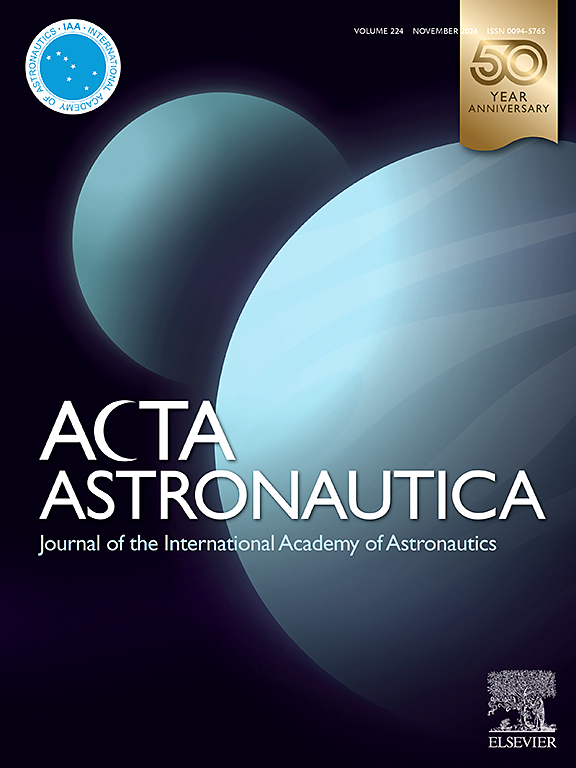Research on the effects of shock waves induced by a ramp on combustion oscillation in a scramjet combustor
IF 3.1
2区 物理与天体物理
Q1 ENGINEERING, AEROSPACE
引用次数: 0
Abstract
Achieving effective mixing of fuel and air under supersonic flow conditions remains a significant challenge. Techniques such as utilizing cavities and inducing shock waves can enhance mixing and facilitate ignition within the engine. However, these methods also introduce complexities to the flow structure, potentially resulting in more intricate combustion oscillations that could adversely affect the engine's structural stability and performance. This study investigates the effects of an isolator ramp on the combustion oscillation process of kerosene fuel in a combustor, under flight conditions equivalent to Mach 8, through ground-based experiments. The isolator ramp is installed on the lower wall of the isolator at two distinct distances-65 mm and 95 mm-from the leading edge of the combustor cavity. Air throttling is employed to aid the ignition process. The findings indicate that the oblique shock wave generated by the isolator ramp plays a crucial role in influencing combustion oscillations. Positioning the ramp 95 mm upstream of the cavity's leading edge, rather than 65 mm, is more effective at mitigating the upstream propagation of combustion backpressure. This approach reduces the risk of engine unstart caused by combustion backpressure and suppresses combustion oscillations. Furthermore, the interaction between the oblique shock wave from the ramp and the bow shock wave from the fuel jet diminishes the penetration depth of the fuel injection. This effect weakens the coupling between fuel injection and heat release, leading to a significant reduction in combustion oscillations associated with thermo-acoustic effects.
求助全文
约1分钟内获得全文
求助全文
来源期刊

Acta Astronautica
工程技术-工程:宇航
CiteScore
7.20
自引率
22.90%
发文量
599
审稿时长
53 days
期刊介绍:
Acta Astronautica is sponsored by the International Academy of Astronautics. Content is based on original contributions in all fields of basic, engineering, life and social space sciences and of space technology related to:
The peaceful scientific exploration of space,
Its exploitation for human welfare and progress,
Conception, design, development and operation of space-borne and Earth-based systems,
In addition to regular issues, the journal publishes selected proceedings of the annual International Astronautical Congress (IAC), transactions of the IAA and special issues on topics of current interest, such as microgravity, space station technology, geostationary orbits, and space economics. Other subject areas include satellite technology, space transportation and communications, space energy, power and propulsion, astrodynamics, extraterrestrial intelligence and Earth observations.
 求助内容:
求助内容: 应助结果提醒方式:
应助结果提醒方式:


